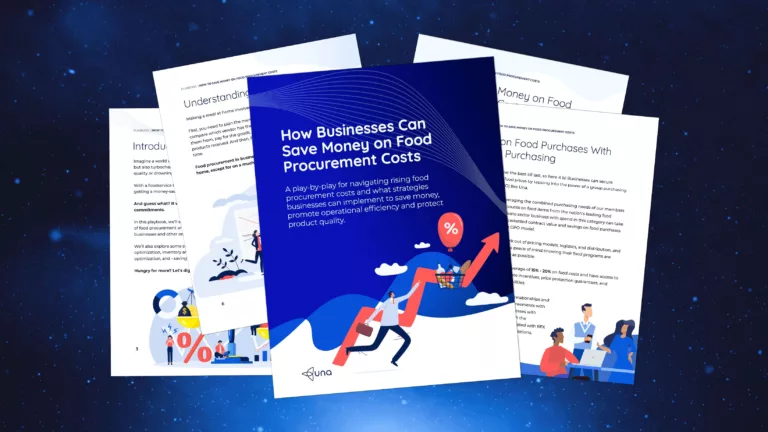
What Makes a Supplier Strategic?
Explore what makes a supplier strategic, learn why it matters, and how you can get noticed by supplier partners that are critical to your business.
By Hugo Britt | June 8, 2023
“Strategic supplier” can be a tricky term to define because it means different things to different companies. In this article, we explore the factors that make a supplier strategic, touch on the popular Kraljic Matrix, and gain some valuable insights on strategic suppliers from Chandhrika Venkataraman, a former guest on The Sourcing Hero podcast.
What makes a supplier strategic - and why does it matter?
Why should we spend so much time and effort puzzling out which of our suppliers are considered strategic?
The fact is that procurement teams can only do so much. In a business with hundreds or thousands of suppliers on the books, we can’t possibly build a strategic relationship with every vendor. We need to focus on those that are critical for maintaining a reliable supply chain, optimizing costs, driving innovation, improving efficiency, and supporting strategic objectives.
Focusing on the suppliers that are critical for maintaining a reliable supply chain, optimizing costs, driving innovation, improving efficiency, and supporting strategic objectives is the best use of procurement's valuable time.
It's not just about spend volume
Remember, a strategic supplier is not simply a supplier with whom you spend a large amount of money.
For example, you spend a significant amount on facilities maintenance, but if your chosen supplier suddenly went bankrupt, this would probably not cause a major headache for the organization or the procurement team. The business would continue to operate, and it wouldn’t take long to pivot to an alternative supplier as there are multiple competitors to choose from.
There are plenty of definitions available online, but in my opinion one of the best comes from Oboloo. They define a strategic supplier as “a company that provides goods or services that are critical to the success of your business”.
“Critical to business success” could mean several things, such as:
- A supplier that is critical to the day-to-day running of your business. Will production or productivity grind to a halt if you suddenly lose that supplier?
- A supplier that is key to your future growth. Does your organization’s future plans rely on the goods or services provided by a particular supplier?
- A sole supplier with no competitors. Are you “stuck” with a particular supplier because there are no alternatives?
The Kraljic Matrix
If you’re new to procurement, it won’t be long before someone in the team mentions Kraljic. But what is it, and how does it help organizations work out who their strategic suppliers are?
Also known as the Purchasing Portfolio Matrix, the Kraljic Matrix helps companies understand the importance and impact of different products or services they purchase and develop appropriate procurement strategies.

The matrix categorizes items into four quadrants based on two key factors: supply risk and profit impact.
[Bottom left] Non-Critical items:
These items have a low supply risk and a low profit impact. They are usually readily available in the market, and their purchase does not significantly affect the company’s profitability. Companies can adopt more relaxed procurement approaches for these items, such as seeking standardization, cost reductions, or outsourcing.
[Bottom right] Bottleneck items:
These are items that have a high supply risk but a low profit impact. They are critical to the business operations, but their impact on profits is relatively small. Examples could be specialized raw materials or components that are difficult to source but don’t significantly affect the company’s profitability. The focus for these items is usually on building strong relationships with suppliers and ensuring a stable supply chain.
[Top left] Leverage items:
These items have a high profit impact and a low supply risk. They are important for generating profits, but the supply market is stable and reliable. The company has more bargaining power in these cases, and it can focus on negotiating better prices and terms with suppliers to maximize profitability.
[Top right] Strategic Items:
These items have both a high supply risk and a high profit impact. They are critical to the company’s success, and any disruption in supply can have a significant negative impact on profitability. These items require close monitoring and careful management. Companies may invest in building long-term partnerships, exploring alternative suppliers, partner with a group purchasing organization, or even considering vertical integration to reduce supply risks.
Strategic suppliers are the suppliers who provide high-quality products or services that are critical for you to run your business. They're reliable and respected, have a strong track record of delivering products or services on time, and offer competitive prices and favorable terms.
Defining what makes a supplier strategic
On episode 106 of The Sourcing Hero podcast, Kelly Barner discussed the nature of strategic suppliers with global supply chain thought-leader Chandhrika Venkataraman, Founder of Source Refresh LLC. You can listen to the full episode here.
To summarize, Chandhrika’s definition of a strategic supplier is anyone who can impact your business and plays a very critical role in the success of your business. These suppliers provide high-quality products or services, are reliable and highly respected within their industry segments. Strategic suppliers also have a strong track record of delivering the products or services on time, offer competitive prices and terms that are favorable.
A commonly overlooked and under-leveraged aspect of strategic supplier relationships is the suppliers’ ability to bring in innovation and continuous improvement.
CIPS defines a strategic supplier as follows: “A supplier identified as a potential source of competitive advantage, leading to reduced costs and improved efficiency through open communication, trust and recognizing opportunities to work together.”
This definition suggests a fairly balanced relationship where the purchaser and supplier view each other as equally critical to their business success, but the reality is that this isn’t always the case
What if a strategic supplier doesn’t even know you exist?
It’s important to remember that for many small businesses, the supplier may not view you as critical to their business. Even so, the supplier may be interested in your future growth and how this may translate into opportunities for them.
During the podcast episode, Chandrika warns that frameworks for understanding suppliers typically originated in larger organizations, where mutually beneficial relationships exist between buyer and supplier. It’s not necessarily the same for small and mid-market businesses.
SMEs need to take time to figure out and understand their supplier’s own needs and determine how they can add value. How can the SME help the supplier grow, even when you’re not their biggest revenue generator? One way is through innovation and agility.
An advantage that smaller businesses has over larger corporations is speed to market. SME teams are agile and red tape is limited. This means they can make decisions easier and faster.
Presenting your strategic suppliers with a faster way to market is very appealing and a way to stand out amongst other buyers who may have larger volumes of spend.
Join a group purchasing organization to even the balance
Another way to address the power imbalance with a large strategic supplier is to join a group purchasing organization. By partnering with a GPO, you are joining a collective group of sourcing heroes from hundreds of organizations representing billions of dollars of spend.
When the volume is this high, suppliers are motivated to provide GPO members of every size with discounted pricing and quality service.
Want to learn more about how joining a GPO can help you save money, time, and effort – and increase your number of strategic suppliers? Contact our team of Sourcing Advisors to get started.






